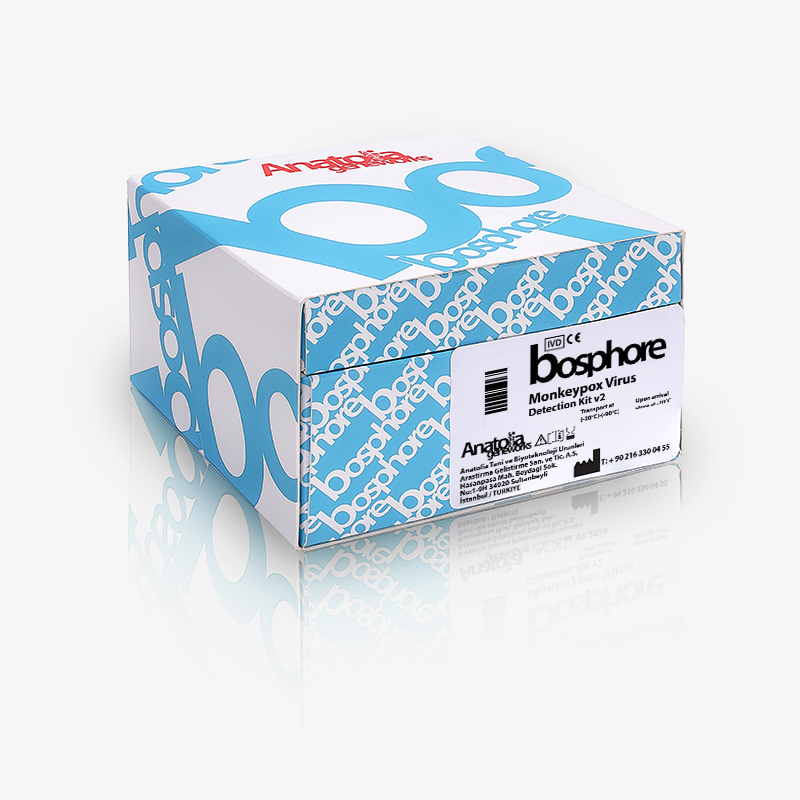Crimean-Congo hemorrhagic fever (CCHF) is a viral disease that is transmitted by ticks (especially Hyalomma genus) and causes zoonotic infection. The causative agent of the disease is a virus with the same name as the disease. The Crimean-Congo virus is the most dangerous tick-borne virus in the world, causing a deadly infectious disease. It is not a common disease and therefore does not pose a significant public health threat. However, it has important effects on health personnel, especially in countries where health services are insufficient. Because although the tick is an important vector in the transmission of the disease, further secondary cases are spread by human-to-human transmission. The disease is often transmitted from person to person through skin or mucosal exposure to blood and body fluids containing the virus.
Crimean-Congo Hemorrhagic Fever (CCHF)

The virus can infect humans as well as domestic and wild animals. The pathogenic virus, especially common in East and West Africa, is an RNA virus belonging to the Nairovirus group of the Bunyaviridae family. Although clinical disease is rare in infected mammals, it is often severe in humans and the mortality rate is 30%. Since the virus is transmitted by ticks in endemic areas, people who deal with agriculture and animal husbandry are in the high-risk group.
History
The syndrome was first encountered in Western Crimea in 1944. Apart from Africa, it has been found in many Asian and Eastern European countries, including Türkiye. In 2006, an epidemic occurred in the Black Sea region of our country and dozens of people caught the Crimean-Congo fever.
Epidemiology
Sporadic infection of the syndrome in humans is usually caused by the bite of the Hyalomma (Hyalomma marginatum) tick. Still, there are 30 tick species known to transmit the disease (30 of 850 species are reported to transmit CCHF). In addition to farm animals such as cattle, sheep, and goats, the causative virus has also been found in wild animals such as foxes. It can also infect birds and small mammals. The presence of the virus in some birds on the migration route between Africa and Europe has led to the idea that the birds may have provided the intercontinental transmission of the virus.

The disease can occur in humans after processing or eating the meat of infected farm animals. It has also been seen in healthcare workers who have encountered infected blood and vomit. The nosocomial route is a known mode of transmission. A common way of transmission to humans is through a tick bite. Apart from these, contact with infected patients is also an important factor in transmission.

Process After Infection
There is an incubation period of about 2 to 12 days from the first tick bite. In hospital-acquired infections (nosocomial infection), the incubation period varies between 3 and 10 days. After the incubation period, flu-like symptoms begin to appear. These can subside after about a week. However, signs of hemorrhage begin to appear within the first 3-5 days of the illness: primarily mood swings, agitation, mental confusion, and throat petechiae. Later, nosebleeds, bloody urine, and vomiting are observed. The liver swells and hurts. Apart from these, thrombocytopenia and leukopenia are among the laboratory findings. In addition, aspartate aminotransferase (AST), alanine aminotransferase (ALT), and lactate dehydrogenase (LDH) rates are increased.
9-10 days after the first appearance of symptoms, patients show signs of improvement, but 30% die within 2 weeks of illness.
Diagnosis
According to CDC, laboratory tests used for diagnosing CCHF include antigen-capture enzyme-linked immunosorbent assay (ELISA), real-time polymerase chain reaction (RT-PCR), attempts to isolate the virus, and detection of antibodies by ELISA (IgG and IgM). During the acute phase of the disease, a combination of viral antigen detection (ELISA antigen capture), viral RNA sequencing (RT-PCR) in blood or collected from tissues of fatal cases, and virus isolation can be used to make a laboratory diagnosis in patients with a clinical history suggestive of CCHF. In later stages of the disease, in survivors, antibodies can be detected in the blood, as the viral antigen, RNA, and virus may no longer be present or detectable.
Treatment
Since there is no specific treatment, treatment mostly includes symptomatic and supportive treatment. Thrombocytopenia, which is frequently observed during the disease, should be corrected when necessary, and clotting factors should be replaced. For this purpose, thrombocyte suspensions are used. Administration of immune serum from survivors or from horses may be effective. Research on this subject continues.
There is no vaccine prepared with modern techniques, but research continues. It is known that those who have the disease can acquire lifelong immunity.
Public Health and Protection
Since it is a contagious disease, it is very important to raise public awareness against Crimean-Congo Hemorrhagic Fever and to take measures in terms of public health. Avoidance of the people from the environment where the ticks are found, during the periods when ticks are active, for example, in April and October when the most common agent of transmission is active; Inspection of people working in environments where ticks can be found in large numbers (in barns, etc.) is a useful measure. Again, as a precaution against ticks, the use of chemicals that will repel ticks, that is, the use of repellants, and the application of insecticide in open areas, especially where they are very concentrated, are among the possible precautions. Contact with the blood and body fluids of patients should be avoided.

If one finds a tick during epidemic periods, it is important not to try to remove it, he or she should go to a suitable healthcare center and let the experts remove the tick.

